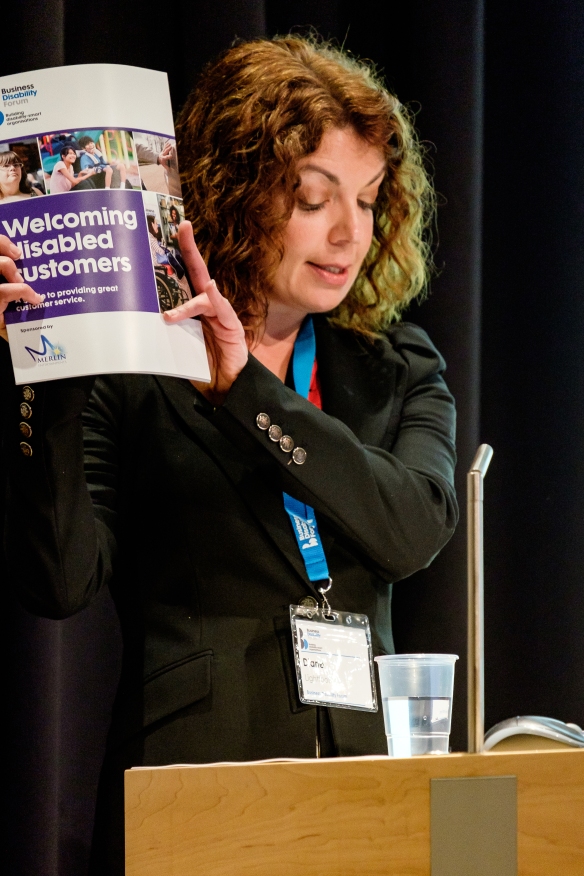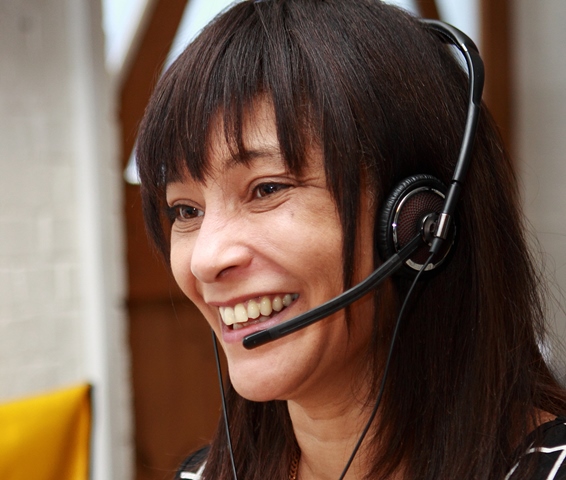Angela Matthews, Head of Policy and Advice

Martyn Sibley, one of the panellists at the conference
We have been thrilled to get such great feedback on last week’s conference titled ‘Disability leading the way’. Throughout the day, we heard from: business leaders on what they have implemented to ensure disability stays on the agenda at every level of the business; senior diversity leads on the role in mobilising and advancing change in workforces; and disabled people on the change they wanted to see and be for the future of disabled people’s rights.
Some fascinating directions were debated. Below, I give my thoughts on three key topics that came up from the perspective of my role as Head of Policy: legislation, campaigning and leadership.
Do we need more legislation?
I recently asked this question at a roundtable where the delegates were business leaders and heads of disability and employment third sector organisations. One of the business leaders shook his head enthusiastically and said, “No way”. At our conference, I was taken with Hector Minto’s (Senior Technology Evangelist, Microsoft) words during the penultimate panel of the day (“Leading the way: our Disability-Smart Award winners”). He spoke about using the law to help businesses understand what they need to do. As an example, the law on accessible websites is clear and gives a description of what an accessible website needs to be. Practice can then be built upon this, for example, Microsoft’s in-built accessibility checker on Office 365.

(From left to right): Change in our time? Leaders of today panel: Asif Sadiq, Mike Clarke, Caroline Casey, Victoria Cleland and Brian Heyworth.
In addition, in November 2018, we responded to the Government Digital Service’s consultation on the UK’s implementation of European Union’s regulations on the accessibility of public sector websites. While collecting evidence for this, we heard from more than one hundred disabled people who said digital barriers remain huge and, as a result, they wanted more legislation and monitoring of inclusive websites.
Ultimately, as much as we hear about ‘legislation fatigue’, the law has changed things for disabled people and has provided methods for recourse for when these rights are denied (figures this week show a rise in employment tribunal disability discrimination claims).
But who made such law happen? Who were the leaders?
Making way for change ‘on the ground’
A common theme throughout the day was that “anyone can be leaders”. While this can be true, those leading change are often different from those implementing change. As an example, disability rights legislation (or any rights-based legislation) did not come from the State all of a sudden upon deciding that disabled people should have more rights. There were years and years of campaigning ‘on the ground’ to make disabled people’s experiences visible.
In America during 1977, after almost a month of street protests, hundreds of disabled people took over state buildings to put pressure on the Department of Health, Education and Welfare to move forward legislation that would secure rights and access for disabled people further. After years of campaigning, the Americans with Disabilities Act became law. Similarly in the UK, the Disability Discrimination Act did not happen overnight. It took years and years of disabled people speaking their stories outside Government buildings, blocking the streets, chaining themselves to public transport.
Wendy Irwin (Head of Equality and Diversity, Royal College of Nursing), also on the panel, used a key word: “agency”. It needs people at ‘grassroots’ level, exercising agency, to make way for change – and then others need to take over and make that change happen. Change needs both the campaigners and the strategists; the campaigners make space for the strategists to effect change. This is why inclusive leaders at senior level are so crucial.
The right leaders
Exercising agency is only one element of creating change. To make change happen, a body (a Government or business) must have the right leaders in place to both hear the issues and activate change. This takes us to the last panel of the day (“Leaders of Today”), where Brain Heyworth (Global Head of Client Strategy, HSBC) said, “If the leaders are not working [i.e. making things better for disabled people], change the leaders”. We then heard from Mike Clarke (National Diversity Manager, Environment Agency) that equality and inclusion is on the agenda at every senior level meeting at Environment Agency and, if a senior leader comes to a meeting having done nothing to further inclusion since the group last met, they are asked to leave the meeting. This was good news coming just after Diane Lightfoot (CEO, Business Disability Forum) and I had discussed that our latest research, The Great Big Workplace Adjustments Survey 2019, had found that 51 per cent of senior leaders said supporting disabled staff at work is not on their board agenda.

Diane Lightfoot holds the Welcoming disabled customers guide
Moving forward
Everyone can be leaders, but leaders come with different roles. We need people to make barriers visible, and we need people to remove those barriers. When Simon Minty (Sminty Ltd and Business Disability Forum Ambassador) asked the panel of young people (“The Next Generation, Change Makers and Innovators”) what they wanted to see happen next, Abi Brown (disability rights activist and writer) said equal access to buildings, and Molly Watt (Accessibility and Usability Consultant and author) said better access as consumers and for businesses to recognise their role in influencing the future of disability rights.
It is then perhaps no accident that the organisations with the most effective disability inclusion strategies and whose data shows increasing levels of disabled employee engagement and development are the organisations where the disabled staff network and senior leaders have strong communication and are highly collaborative. We are seeing more disabled employee network leads at the meetings with senior leaders at the organisations we work with. At the same time, as above, disabled people throughout the day said they still can’t get into a high percentage of the shops or café buildings in their area.
Good things are happening, but there is no shortage of more to be done. Does your organisation have the right leaders, at every level, making way for and implementing the changes that are needed?
Our Welcoming disabled customers guide is available to view here





